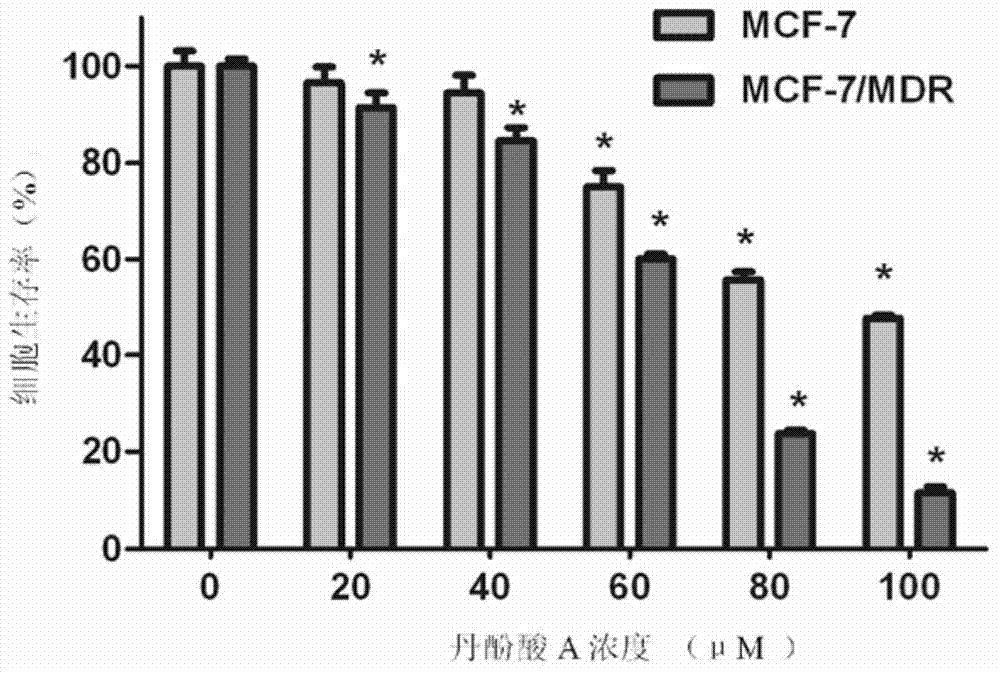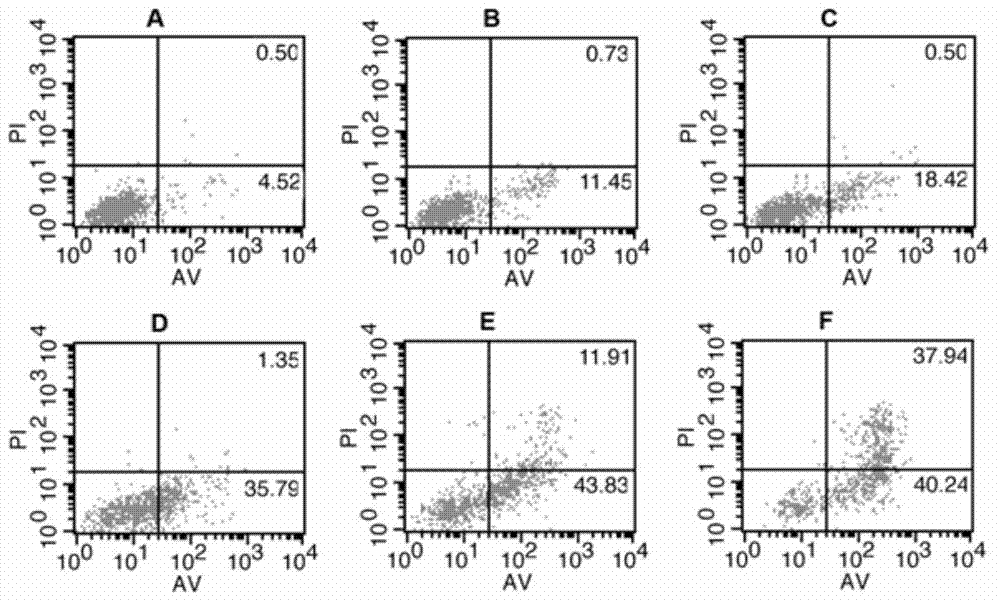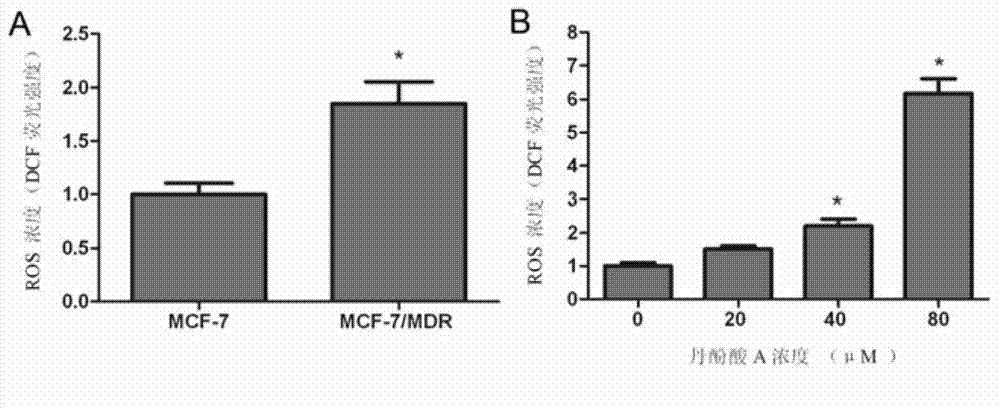Application of salvianolic acid A in preparation of medicine for treating tumour multi-drug resistance
A multi-drug resistance, salvianolic acid technology, applied in anti-tumor drugs, drug combinations, pharmaceutical formulations, etc., can solve the problems of inability to be widely used in clinical practice, large toxic and side effects, and achieve good water solubility and good bioavailability. Effect
- Summary
- Abstract
- Description
- Claims
- Application Information
AI Technical Summary
Problems solved by technology
Method used
Image
Examples
Embodiment 1
[0021] The effect of salvianolic acid A on the proliferation of human breast cancer cell MCF-7 and drug-resistant cell MCF-7 / MDR was detected by MTT assay. Human breast cancer cells MCF-7 in the logarithmic growth phase and drug-resistant cells MCF-7 / MDR were seeded in 96 microwell culture plates with a cell number of 5×10 3 / well at 37°C, 5% CO 2 After culturing in the incubator for 12 hours, add drugs in groups, set up parallel wells for each concentration, add normal saline to the negative control, add MTT10μl (5mg / ml) to each well after 24 hours, and culture in the incubator for 4 hours, discard the upper Add 100 μl of DMSO to each well, shake until the precipitate is completely dissolved, and measure the optical density (OD) value of each well at 490 nm. Cytotoxicity MTT assay showed that salvianolic acid A had a dose-dependent inhibitory effect on the survival rate of breast cancer cell MCF-7 and its multidrug-resistant cell MCF-7 / MDR, and had a dose-dependent inhibitor...
Embodiment 2
[0023] The apoptosis of MCF-7 / MDR cells induced by salvianolic acid A was detected by flow cytometry. Inoculate MCF-7 / MDR cells in a 6-well plate, treat the cells with salvianolic acid A for 24 hours after 12 hours, discard the medium containing the drug in each well, wash 2 times with PBS, follow the instructions of the Annexin V-FITC kit The operation was detected by flow cytometry, and the results showed that salvianolic acid A could induce the apoptosis of drug-resistant tumor cells MCF-7 / MDR in a dose-dependent manner. see results figure 2 .
Embodiment 3
[0025] The changes of intracellular reactive oxygen species (reactive oxygen species, ROS) under the action of salvianolic acid A were detected by fluorescence spectrophotometry. Inoculate MCF-7 / MDR cells in a 24-well plate. After the cells adhere to the wall, treat the cells with salvianolic acid A for 24 hours. Discard the medium containing the drug in each well, wash it twice with PBS, and follow the requirements of the active oxygen detection kit. The step is to add reactive oxygen free radical fluorescent probe DCFH-DA, and detect the fluorescence intensity by fluorescence spectrophotometry. see results image 3 b.
PUM
 Login to View More
Login to View More Abstract
Description
Claims
Application Information
 Login to View More
Login to View More - R&D
- Intellectual Property
- Life Sciences
- Materials
- Tech Scout
- Unparalleled Data Quality
- Higher Quality Content
- 60% Fewer Hallucinations
Browse by: Latest US Patents, China's latest patents, Technical Efficacy Thesaurus, Application Domain, Technology Topic, Popular Technical Reports.
© 2025 PatSnap. All rights reserved.Legal|Privacy policy|Modern Slavery Act Transparency Statement|Sitemap|About US| Contact US: help@patsnap.com



